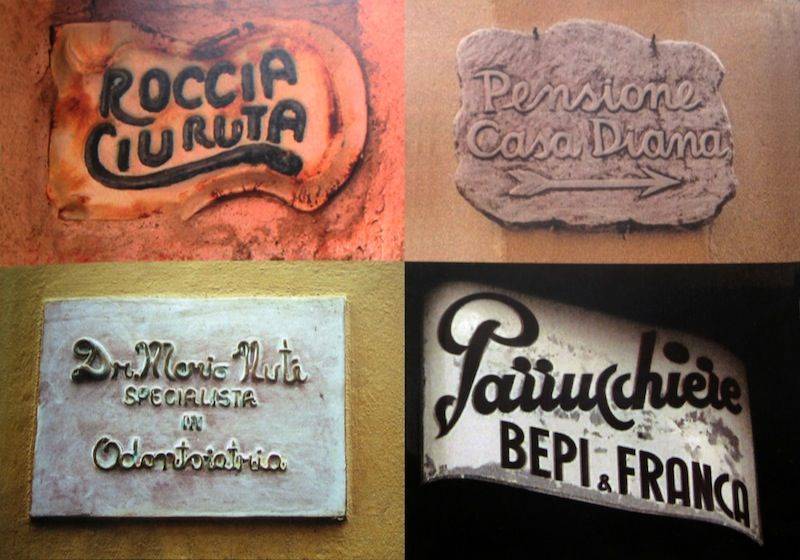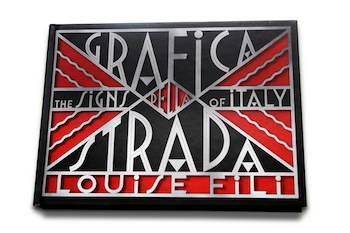The Beauty of Italian Lettering: Fonts, Words & Street Signs
The book really began during Fili’s first trip to the birthplace of typography, during which the author swooned over the country’s signs. Fili was sixteen at the time and accompanied by her parents, who hadn’t returned to their country of origin since her birth.
The first advertisement to catch her eye showed a couple embracing under the words Baci Perugina. “I didn’t know what product this advertised,” says Fili, “but it didn’t matter. This was the pivotal moment when I fell in love all at once with Italy, type, and food.”
Ever since then, Fili has amassed hundred of images of the signs she adored in cities and villages both north and south, including Turin, Lucca, Rome and Taormina. Flipping through the book, you’ll find photographs of a wide variety of one of a kind signs for hotels, butchers and greengrocers.
Few words, but lots of pics
The book has few words but lots of images that unearth “vintage” Italy, with its signs engraved in wood, lit up in neon, sculpted in marble or painted on ceramics, so that today we can actually lay our hands on them.
“I started photographing in the late 1970’s, in 35-millimeter slides,” writes the author. “These evolved into point-and-shoot snapshots, which were assiduously placed in binders, by city, on a dedicated shelf in my studio.”
During that period, the development of early information technology was beginning to make its presence felt, but it was still a long way from the kind of technology we know today; no one was photographing street corners with his iPhones just yet.
Among her many stays in Italy, Fili was also an artist-in-residence at the American Academy in Rome. A typical day was spent with a map in hand and the desire to get lost n the streets of Rome. During her long walks she came across markets, antique shops and bookstores. It became a real obsession. The simple “T” of Italian Tabacchi (tobacconists), for example, aroused in her a sense of wonder she could not control.
A well organized journey
The book opens with a short introduction by the designer before taking the reader on an intelligent journey. The sign photographs are divided into three stylistic categories, as Fili points out, “classic, traditional and eclectic, followed by more specific genres: Futurist/Fascist street signs and numbers, signs at the seaside and ghost signs,” old signs that have been kept for decorative purposes. The final section is dedicated to Sandro Ponzi—“Impossible things we can do right away; miracles take a little more time”— the last living sign painter in Rome and heir to a family tradition that began at the turn of the 20th century with his grandfather Aristide.




































i-Italy
Facebook
Google+
This work may not be reproduced, in whole or in part, without prior written permission.
Questo lavoro non può essere riprodotto, in tutto o in parte, senza permesso scritto.